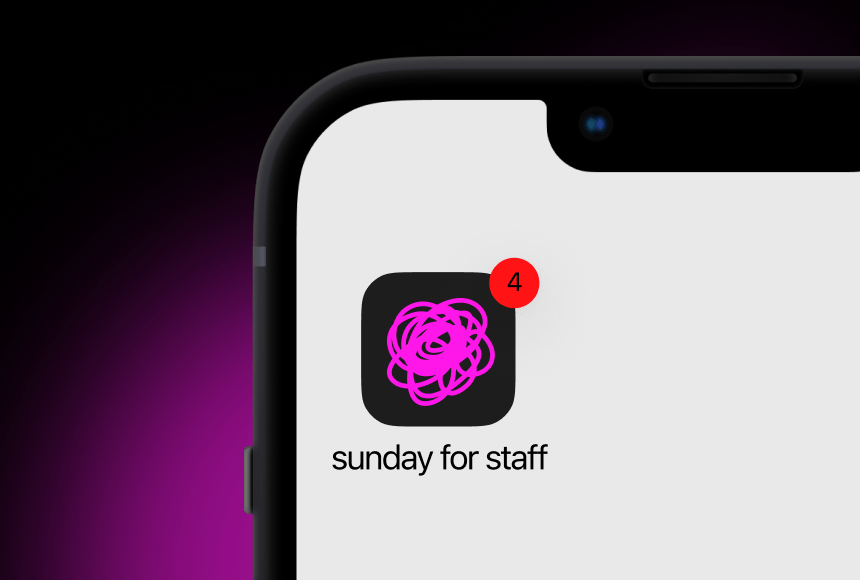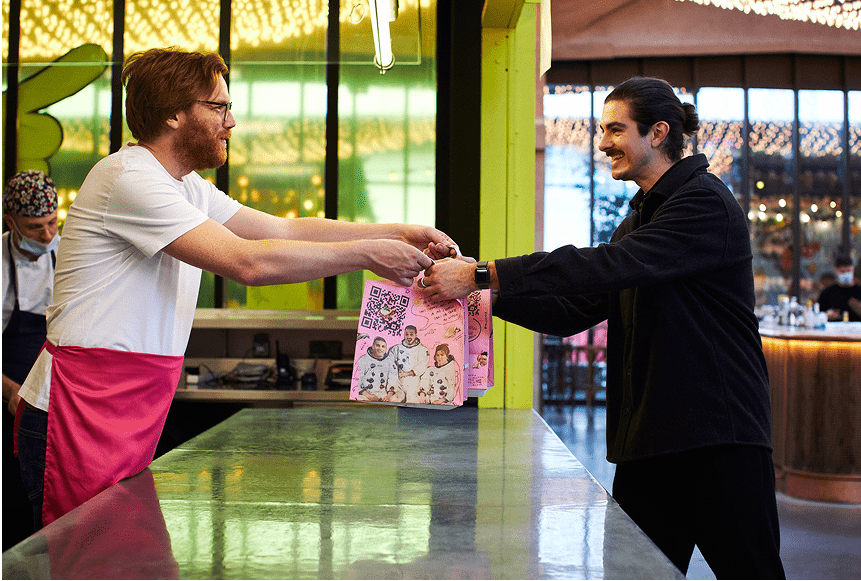
How Technology Can Genuinely Increase Restaurant Tips
Tipping Culture in the UK: A Quick Refresher
It’s no secret that tipping culture in the United Kingdom can sometimes confuse guests, restaurateurs, and even the waiting staff. Unlike in some other countries where a flat 20% tip is customary regardless of the service quality, the UK system is far more nuanced. Traditionally, British diners might add 10–12% to the total, or they might forego tipping altogether if the service doesn’t meet their expectations.
Why is this important for your restaurant? Because the very nature of tipping in the UK is flexible. Customers often decide on the amount at the table, influenced by factors such as service quality, ambience, and personal preference. This means you have room to positively impact your customers’ tipping decisions—and technology can be part of that strategic approach.
In recent years, an interesting trend has emerged: digital payment solutions appear to be boosting tip percentages. This happens because of a few reasons, including convenience, user experience, and the psychological power of suggested tip prompts. Yet not all digital solutions are created equal. By carefully selecting and optimising the right technology for your restaurant, you can increase tips while ensuring guests feel they’re contributing in a seamless, comfortable way.
The Tech Tipping Factor
What do we mean by “tech tipping factor”? Simply put, it’s how modern payment methods and tools influence how much a customer is likely to tip. If you’ve ever seen a digital payment prompt that automatically asks for a tip—say 10%, 15%, or 20%—then you’ve experienced it firsthand. The structured nudge tends to raise the average tip size, because it sets a benchmark in the diner’s mind. According to a 2022 analysis published by BigHospitality (BigHospitality), UK restaurants that actively display tipping options during digital transitions see an increase in gratuities of nearly 15% compared to those that don’t offer such prompts.
However, it’s not enough just to set up a card terminal or any payment solution that automatically prompts a tip. Restaurant owners need to provide a smooth, intuitive digital journey—one that invites customers to leave a monetary appreciation without feeling pressured. This is often where a QR code payment system coupled with a direct tipping interface can excel. By making the payment process quick, clear, and personalised, you not only enhance the guest experience but also subtly encourage higher tips.
The Psychology of Tipping
It’s essential to delve into a bit of psychology if you want to optimise tip amounts. Most diners tip for two main reasons:
- Social Norms: People generally don’t want to appear stingy, especially in social settings or when they sense the server went the extra mile.
- Reciprocity: If they feel valued, diners are more inclined to repay that favour with a tip. This sense of reciprocity can be nudged along by small gestures or personal connections between staff and guests.
Interestingly, digital payments can enhance these psychological triggers. For instance, a study by the Cornell University School of Hotel Administration found that custom messages such as “Thank you for dining with us!” at checkout can raise tip amounts because diners feel personally acknowledged. Combine that with a user-friendly digital platform that tactfully showcases tip options, and you create a moment where guests want to express gratitude.
Yet there’s a balancing act here: you don’t want the digital prompt to feel overbearing or manipulative. Instead, it should encourage voluntary generosity. It’s about gentle persuasion, not arm-twisting.
Tech Tools That Boost Tips
Now, let’s move from theory to practice by exploring some of the key digital solutions that tend to drive higher tips. While there are various platforms, apps, and tools out there, we’ll focus on general categories that can seamlessly fit into your restaurant’s day-to-day workflow.
1. Integrated Card Terminals
The conventional card terminal, when working properly, is quick and secure. But older machines might not offer suggested tip amounts or custom tip messaging. Modern card terminals designed with advanced features can automatically display tip options and even show a short thank-you message once payment is finished. This small addition can push diners to opt for a slightly higher percentage, as they feel appreciated and guided.
2. Mobile Payment Solutions
Mobile-based payment platforms, including those harnessing QR codes, allow diners to pay straight from their smartphones. This can streamline the entire experience, reducing waiting time for the bill and creating a sense of convenience. Within the payment interface, you can easily add a tip prompt that suggests reasonable amounts or percentages. Because customers are using their own device, they often feel more relaxed and in control, potentially nudging up the tip amount.
3. Online Ordering and Payment Apps
For takeaway or click-and-collect services, a digital checkout page can display tip suggestions before finalising the order. While tipping in takeaway scenarios might be less prevalent than dining in, providing this option can encourage generous customers to support your staff. And if your restaurant has cultivated a loyal following, fans of your brand may be more than happy to add a tip to show their appreciation.
A Real-World Example: The ‘Friendly Brasserie’ Next Door
To illustrate how technology can influence tipping behaviour, let’s imagine a small but thriving neighbourhood brasserie—let’s call it The Friendly Brasserie. Before adopting new tech, they relied on simple card machines. On average, only 30% of customers left a tip. Those who did tip usually left around 10% of the bill.
After implementing a digital payment solution powered by QR codes, The Friendly Brasserie began displaying three tip suggestions—with the middle option at 12.5%—alongside a “no tip” button, plus space for a custom tip. The result? Over the next quarter, more than 60% of customers left a tip. Notably, the average tip rose to 12%. Over time, staff members felt more motivated, and management saw an increase in overall revenue. Surpassing the number crunch, the restaurant’s atmosphere also became warmer, as happy staff often lead to happier guests.
The Key Elements for a Higher Tip
What specific tactics can be borrowed from The Friendly Brasserie’s success story? Let’s break it down:
- Visible Prompts: Offer clear tip suggestions, making it simple for guests to tap or click on an amount.
- Short Notes of Gratitude: A sincere “Thank you for your support!” can gently remind diners of the human element behind their meal.
- Simple Navigation: Avoid clutter and ensure customers can finalise payment within seconds. The more friction you introduce, the lower the tip potential becomes.
- Staff Enthusiasm: Enthusiastic servers tend to earn more tips. Technology can help, but genuine hospitality remains crucial.
The Impact of Digital Payment
To appreciate the full scope of how digital payment methods enhance tipping, consider the following extra benefits they bring to UK restaurants:
- Quicker Table Turnover: With a fast digital payment, your tables free up more quickly, allowing you to seat more guests throughout the day. As your total number of covers increases, even slightly, your opportunity for collecting tips goes up.
- Reduced Human Error: No more mistakes in typing the tip amount or confusion about the total. Automated systems minimise these errors, saving servers the embarrassment of repeated verification and customers the frustration of double-checking their bills.
- Greater Transparency: Many digital tools produce immediate receipts. Customers feel confident about their total, including any tip, which makes them more comfortable tipping in the first place.
Restaurants that deploy advanced payment systems, including QR code technology like sunday, often find that these functionalities help diners see precisely where their money goes, which fosters trust and encourages generosity. A transparent environment is typically a more profitable one.
Encouraging Generous Customer Habits
Making the tipping experience feel natural and intuitive ultimately increases tip percentages. The question is: how do you encourage customers to cultivate generous habits long-term, rather than just once?
- Consistent Service Excellence: Great hospitality is still the bedrock. No digital tool will extract a tip from dissatisfied guests.
- Personalised Interactions: Calling guests by name or recalling a previous order can make people feel valued, which pays off when they’re deciding on a tip.
- Friendly Follow-Ups: Digital receipts or text messages after the meal can offer a kind note such as “We’d love to see you again soon!” This builds a sense of loyalty and might inspire a willingness to tip more during the next visit.
- Community Engagement: Some restaurants give customers the option of rounding up a bill for charity. While not a direct tip, it promotes a culture of generosity that can spill over to how guests treat your staff.
The Role of Staff in Boosting Tips
Though technology provides the framework, your employees weave the final thread in creating a memorable dining experience. Optimal tip levels rely on:
- Knowledgeable Staff: If servers can confidently answer menu questions, diners are more likely to reward that expertise.
- Respectful Communication: Overbearing “salesy” approaches can backfire. Instead, train staff to read the room and use technology to streamline communication rather than force it.
- Positive Attitude: Hospitality is a feeling. A cheerful disposition, warm greeting, and genuine concern for a diner’s wellbeing can be the tipping point—literally.
Additionally, staff members should be comfortable introducing the digital tipping platform. It can be as simple as, “When you’re ready, just scan the QR code to settle your bill. You can add a tip directly on your phone if you’d like. Thank you again for dining with us!” This short, polite prompt raises awareness without making diners feel awkward or pressured.
Why Digital Tipping Is the Future
The UK restaurant sector has seen a steady evolution in its payment methods and consumer expectations. With QR code payments and integrated digital platforms gaining more traction, tipping is bound to follow suit. Here are a few reasons why digital tipping will continue to shape the industry:
- Data Insights: Digital platforms allow every transaction to be tracked. This empowers managers to see tipping trends, identify peak hours or days, and recognise servers who might need extra training or support.
- Customer Preferences: Many customers, especially younger demographics, rarely carry cash. Providing a simple digital tipping pathway ensures you never miss out on gratuities due to a lack of physical notes or coins.
- Brand Differentiation: Showcasing modern, seamless payment experiences can set your restaurant apart, particularly if your competitors are still using outdated systems.
In a hyperconnected world, diners expect speed and flexibility across their entire culinary experience, from booking a table online to paying electronically and posting a review. When these digital touchpoints also encourage easy tipping, it creates a win-win scenario for both guests and staff.
Putting It All Together: A Table for Higher Tips
Below is a quick-reference table bringing together each element discussed, showing how it integrates into your day-to-day restaurant operations:
| Element | Action | Benefit |
|---|---|---|
| Diverse Digital Payment Options | Implement QR codes, updated card terminals, or mobile apps | Convenience for customers and higher tipping confidence |
| Sensible Tip Prompts | Suggest preset tip percentages (e.g., 10%, 12%, 15%) | Encourages diners to pick a middle or higher range |
| Personal Touch | Add a short thank-you message or staff greeting | Fosters a genuine connection, boosts reciprocity |
| Quick Checkout | Ensure minimal steps in app or on card terminal | Lowers friction, speeds up table turnover |
| Training Staff | Educate servers on how to introduce digital tipping gently | Customers feel comfortable and not pressured |
| Ongoing Customer Engagement | Send digital receipts with optional feedback or review prompts | Reinforces the habit of tipping and returning |
The Journey Ahead: Building a Culture of Gratitude
Even in an industry shaped by shifting economic conditions, the spirit of hospitality remains timeless. By innovating with clever technology—while still honouring the personal touch your team brings to the table—you can cultivate an environment where diners happily recognise outstanding service, parting with a little extra in their digital payment.
If you’re looking to implement or refine your own system, remember that the goal is consistency, transparency, and genuine hospitality. Systems like QR code payments from sunday can make the process user-friendly, but it’s truly what happens before the guest’s final tap that defines whether or not they leave that extra pound or two.
As you consider upgrading or fine-tuning your tipping process, take a step back and see what matters most to your diners. Do they value speed and efficiency? Then reduce friction in the payment moment. Are they easily influenced by a warm note of gratitude or a personal story? Try weaving those elements into your digital prompts. The best tip-boosting strategies arise from understanding your audience, training your team effectively, and delivering a superior overall experience that makes diners say, “Yes, that was worth a little something extra.”
FAQ – Frequently Asked Questions
Do digital payment systems really increase tips that much?
Yes. Many restaurants see at least a 10–15% increase in tip amounts after introducing digital payment methods, especially those featuring suggested tip percentages. This effect comes from the convenience and subtle psychological prompts built into modern platforms.
What tip suggestions should I display?
Try offering three tiers—such as 10%, 12.5% or 15%—alongside a custom tip option. The middle figure often ends up being the most popular. Tailor these figures to what feels appropriate for your establishment and clientele.
Does adding a mandatory service charge affect tipping?
In the UK, some restaurants do add a discretionary service charge to the bill. However, this can sometimes reduce voluntary tipping because customers feel they’ve already paid extra. If you do implement a service charge, be transparent about where the money goes (e.g., staff distribution). Clarity fosters trust.
Is there a risk of guests feeling pressured by digital prompts?
While a certain level of prompting can shift behaviour toward higher tips, pushing too aggressively can backfire. The key is balance—provide clear, gentle suggestions without making customers feel cornered. A well-designed interface will allow guests to tip freely or not at all, without guilt.
How can I ensure staff receive the tips promptly?
Choose a payment system that guarantees straightforward disbursement of tips. Some solutions allow seamless transfers to staff accounts or payroll. This transparency is vital for employee morale. Look into how the particular digital provider handles tip payouts and be sure it aligns with your team’s needs.
Find out more today
Drop us your details below and we’ll reach out within the next 24
More tips means a better service.
3X more tips mean 3X better guest-experience, and 3X better staff-retention.




